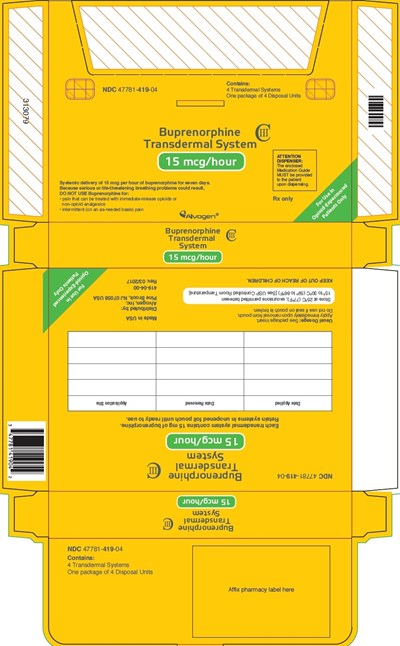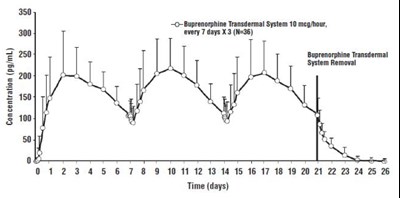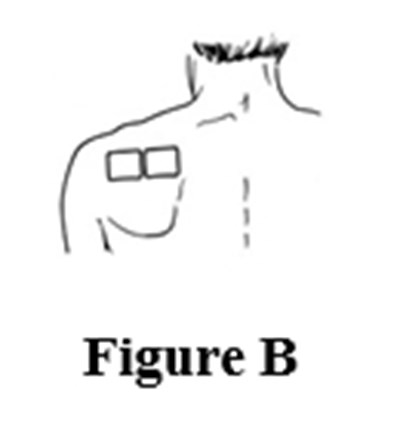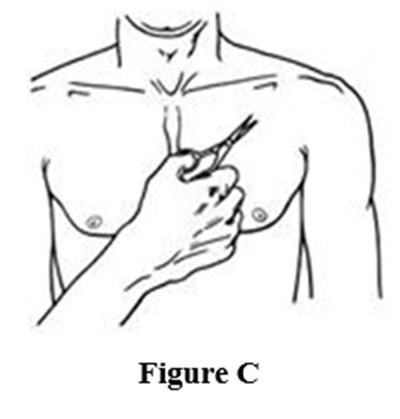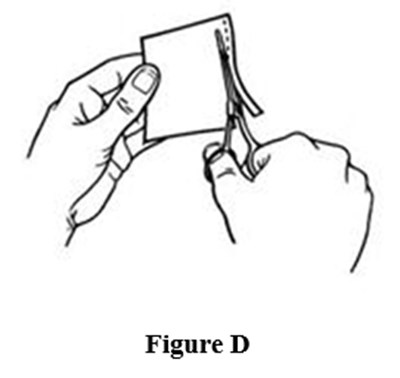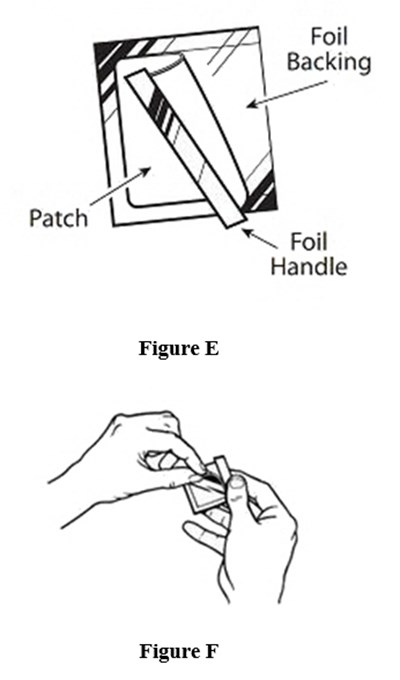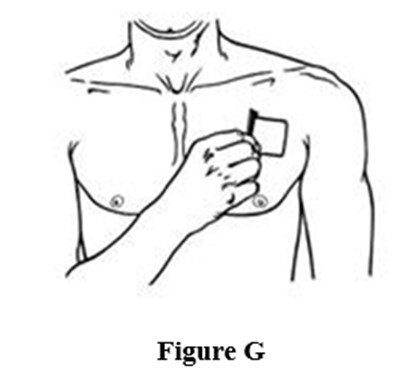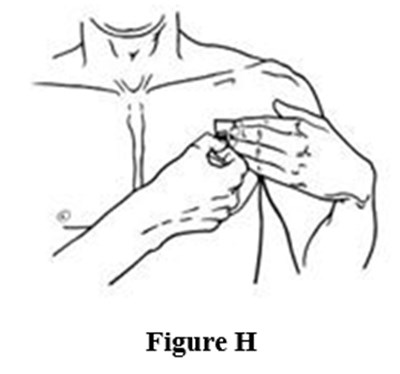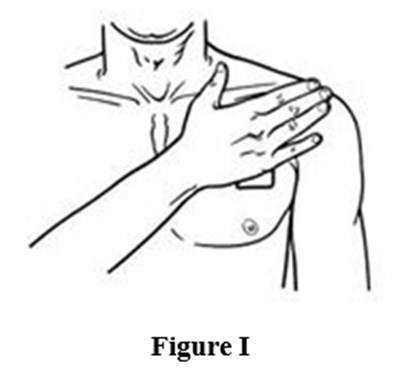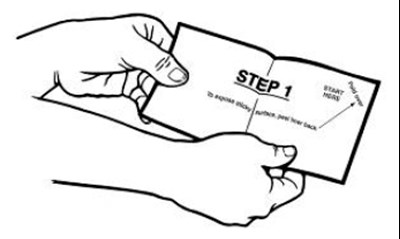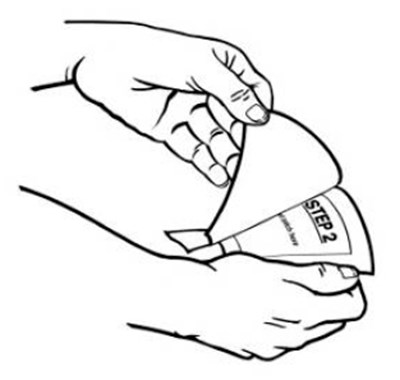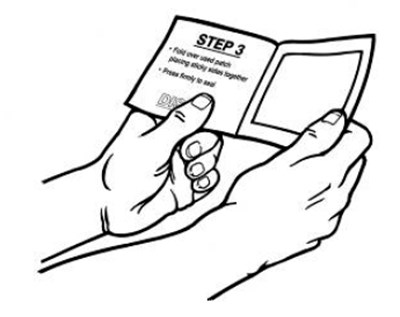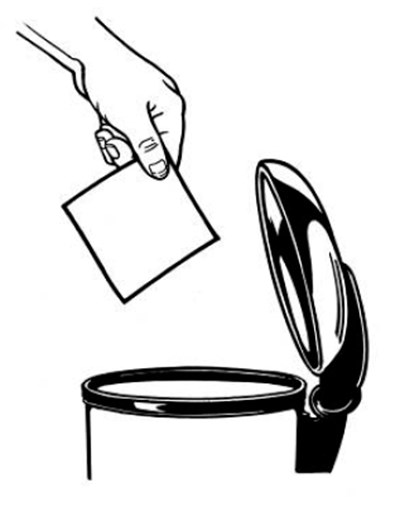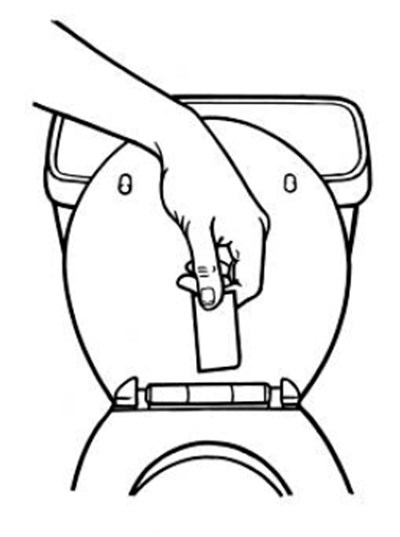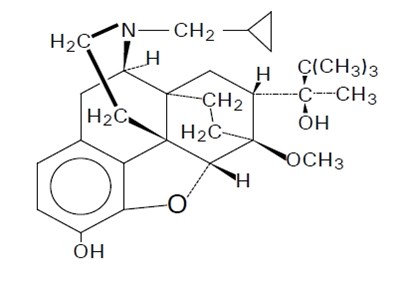Product Images Buprenorphine Transdermal System
View Photos of Packaging, Labels & Appearance
Product Label Images
The following 24 images provide visual information about the product associated with Buprenorphine Transdermal System NDC 47781-408 by Alvogen Inc., such as packaging, labeling, and the appearance of the drug itself. This resource could be helpful for medical professionals, pharmacists, and patients seeking to verify medication information and ensure they have the correct product.
10 mcg per hour carton - carton 10mcg hr

NDC 47781-407-04 package contains four disposal units of Buprenorphine @ Transdermal System with a strength of 10 mcg/hour. It is not recommended to use Buprenorphine in case of immediate contact with the skin or with other medication like Roxonly. The package requires an official pharmacy label to be affixed.*
20 mcg per hour carton - carton 20mcg hr

This is a product description of a Transdermal System containing Buprenorphine used for pain management. Each system has a 20mcg/hour dose delivery for seven days. It is specifically designed for chronic pain that cannot be treated with immediate-release opioids. The package contains four disposal units. The text also includes a barcode and a product code.*
Figure 1 - figure 1

This appears to be a list of components that may belong to a drug delivery system or medical adhesive. The list includes: Backing Laver, Overlapping Adhesive Film, Separating Layer, Drug/Polymer Adhesive Matrix, and Peel.off Release Liner. It is not clear what the purpose or function of these components are or how they relate to each other without further context.*
Figure 3 - figure 3

The document shows a chart indicating the percentage of reduction/improvement in pain for patients treated with a placebo compared to those treated with Buprenorphine Transdermal System 10/20. The chart displays a range from 0% to 280%. The patients treated with Buprenorphine Transdermal System 10/20 showed considerably better pain reduction/improvement than the placebo.*
Figure 4 - figure 4

This is a table that shows the percentage of improvement in pain in patients who used Buprenorphine Transdermal System 5 and 20. The values range from 100% to 10%; however, some numbers are missing or unreadable. The highest improvement percentage reported is 4 at 100% and 80%. The lowest improvement percentage reported is 1 at 50%.*
Table 1 - table 1

This text provides information on the recommended starting doses for buprenorphine transdermal system and the range of previous opioid analgesic daily dose, measured in oral morphine equivalent. The recommended starting dose for the transdermal system is not specified in the text.*
* The product label images have been analyzed using a combination of traditional computing and machine learning techniques. It should be noted that the descriptions provided may not be entirely accurate as they are experimental in nature. Use the information in this page at your own discretion and risk.
